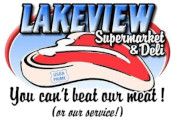Decades ago it was common to buy beef by the quarter or the half. Our mothers, grandmothers and great grandmothers, all could cook almost anything, and make it at least edible. In the 70’s people ate most of what now comes in a side of beef. Rump roast, sirloin tip Roast, heal pot roast, full cut round steak all were common back 45-50 years ago.
As an experienced butcher, and one who cares about quality, I refuse to even carry Rump roasts, tip roasts and full cut round steaks. Why? They are horribly tough, lean and chewy. Sure, they might be cheap, but your family will hate you for buying and cooking them.
These are just a couple of the lousy cuts you get when buy a whole or half steer (or worse a cow!) When you buy a half of beef for example here are some key facts you need to know.
First and foremost, most ranchers cannot afford to feed out a steer to get well-marbled Premium USDA Choice or Prime beef. My professional cattle Ranchers that specialize in raising super-premium beef, tell me that in 2022, you cannot raise a top notch steer for less than $4500! Wow! A steer that weighs in at about 1200 lbs cost you about $3.75 per pound.
That doesn’t sound too bad does it? But wait! Once the animal is initially processed to bring in to a butcher, the animal will lose 55-75% of its weight and now weigh only 740-770 lbs. Which by the way, means that your cost just went up to $6.00 per pound. That still doesn’t sound too bad… But, it gets worse.
When the animal arrives at a butcher shop, after paying a $200 slaughter fee, the beef is hung to age. When the beef hangs for 7-14 days, it already has lost more weight. So now you lost more weight and you payed $200 for slaughter and now you have to pay for processing into steaks and so forth. That costs another $1 per pound, give or take. So now you have another $760 dollars to pay (along with the $200 for slaughter that makes $960). Suddenly, you cost has risen again and now you sit at about $7 and change. Now you have officially exceeded the price of good hamburger on this beef.
But it gets even worse, if you can believe it. That hanging carcass will lose another 40% of fat and bones bringing down the yield even further to a net weight of less than 500 lbs. After all of this, your cost per pound for all cuts will be right around $9.50 give or take.
Now think about this, that’s a good price for Rib Steaks, T-Bones, Fillets, and porterhouse, but that is way high for round steak, chuck roast, rump roast, tip roasts and especially hamburger!
More bad news coming… You will get very roughly 30% burger, 30% round, 30% chucks and only about 10% of the really good, expensive cuts. From that 500 pounds of take home meat you will get the following top quality cuts.
26-28 T-Bones and Porterhouse
28-30 Rib Steaks and Rib Eyes
14-16 Top Sirloins
only Two Tri-Tips, Two Tiny Skirt Steaks, and about 10 small to medium Fillets.
All told, that is about 100 top steaks or cuts. You will get lots of ground beef, lots of round steaks, chuck steaks and roasts, some ribs, a couple mediocre flank steaks, and bags of bones if you want to keep them.
All of this for a mere $5400 plus! Not such a good deal after all is it?
Of course, the cow or steer you would buy would not be an award winning 4-H or FFA steer, so you might get it way cheaper than $4500 plus, plus. The reason for this is that a great steer costs a fortune to buy, and to fatten up. In fact, at today’s prices a premium quality steer will require around $2500 worth of grain or more (Which is why they are so expensive). The cost of grain and high quality genetics is precisely why great meat shops like Lakeview Supermarket and Deli “seem” to have high meat prices. The cost of grain directly translates to better quality, better flavor, more tenderness, but higher prices. In almost every case, cheap meat will mean, less grain, less marbling, less quality, lower USDA Grade and disappointment. With meat, like many commodities you will get what you pay for. The lower the price, the lower the quality, the lower YOUR satisfaction.
Some cow, bull or steer grazing on nothing but grass could be the biggest disappointment of your life, and a possible huge waste of money!
For the above reasons I would never raise a beef for myself, or ever consider buying one. It’s way cheaper to buy the best when you want it, and pay the price for the best quality and cut you really love. You will be way better off! When you consider that the average American only eats beef about 4-5 times a month, according to the Food Marketing Institute, you should pay the price for the good stuff. A slogan I have always held to is this, “Quality is remembered long after the price is forgotten!” My biggest joy, and what keeps me coming to work everyday, are all of the customers who tell me quite frequently that the steak, roast or chop they just ate was the best piece of meat they ever ate! I Love that!
Kenny Parlet 51-year Veteran Butcher and owner Lakeview Supermarket and Deli Award Winning Nationally Recognized Meat Department
PS Never buy a strictly grass-fed steer, you WILL be sorry!
